Summary of Tour:
Sunday: Lewisian Gneisses on Iona. Visit to the Spouting Cave
where the predominant rock type is black amphibolite, a
metamorphic rock. At the Iona marble quarry, the vein of
marble is thin and mostly worked out, but abundant boulders of
marble are seen on the quarry floor.
Monday:
Ross of Mull granite / Moine schist contact studied at Ardalanish Bay, Mull.
The boundary is not simple - blocks of the earlier (800 Ma) schist
fell into the magma of the intrusion (a process called stoping) and
can be clearly seen along the shore. The granite intrusion is
of Caledonian age (ca 420 Ma). At Carsaig Bay, we noted
abundant brachiopod and belemnite fossils of Jurassic age in shales
baked by subsequent basic intrusions. One of the cone sheets
associated with the Mull volcanic centre (60 Ma) could be seen near
the west end of the sandy beach, dipping towards the volcano.
Intended visit to the Carsaig Arches was abandoned due to time
shortage.
Tuesday: A day on a sailing vessel, starting at Fionnphort,
to visit geological features on Mull and Staffa. Jointing in
Ross granite. Contact with Moine schist. Trap topography
on Ardmeanach. MacCullochs tree, a 12 metre cypress tree
which was engulfed by the Tertiary lava flows was observed at the
west end of the Ardmeanach peninsula; fossil wood was formerly found
here, but has been removed by collectors. On Staffa, we
studied the fantastic polygonal basalt columns in the Tertiary lava
flow.
|
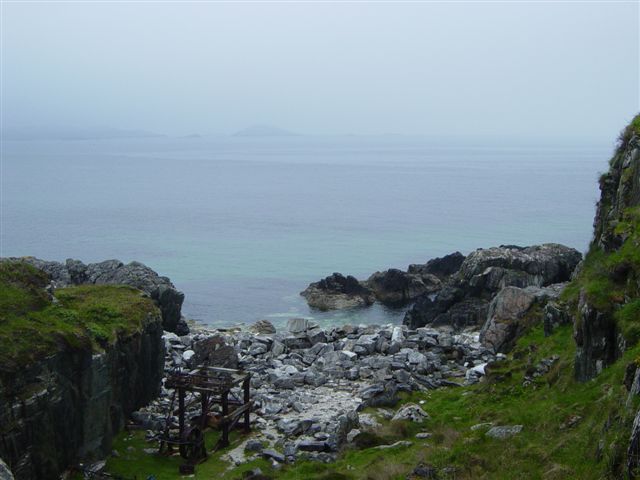 |
The Iona Marble quarry, which was worked in the 19th century. Remains of cutting equipment etc. can be seen. |
| |
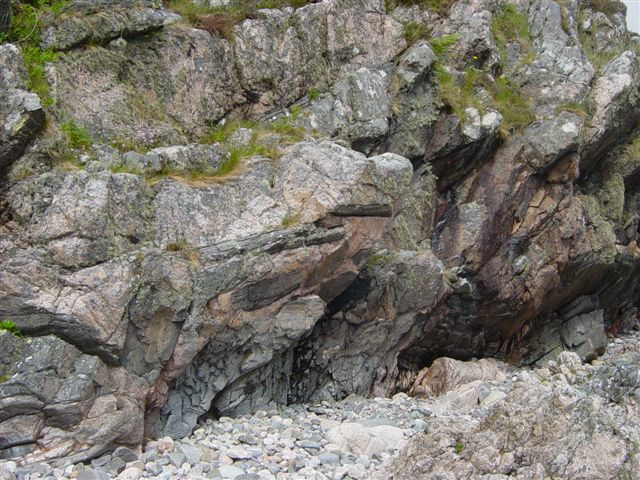 |
The contact between the Moine
Schists (grey) and Ross of Mull granite (reddish), as seen at west
end of Ardalanish Bay, Mull. Lumps of the older layered schist
can be seen to have mixed with the liquid magma (stoping). |
| |
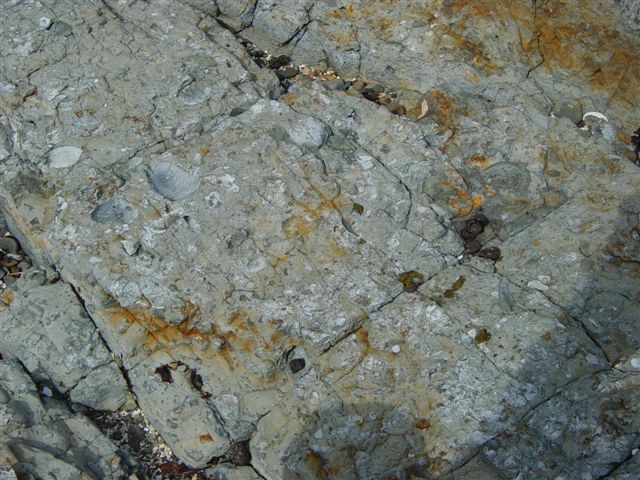 |
Fossil shell casts in Jurassic
shale sediments at Carsaig Bay, Mull. The shale has been baked
due to close contact with an intrusion. |
| |
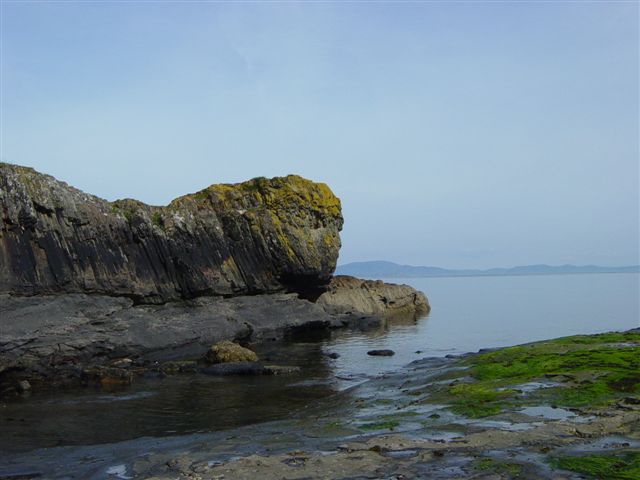 |
The margin of a cone sheet
associated with the Mull volcano, exposed at Carsaig Bay. The
sheet is dipping towards the volcanic centre at an angle of about 30
degrees. It is intruded into Jurassic sediments in which
ammonites and brachiopod shells can be found. |
| |
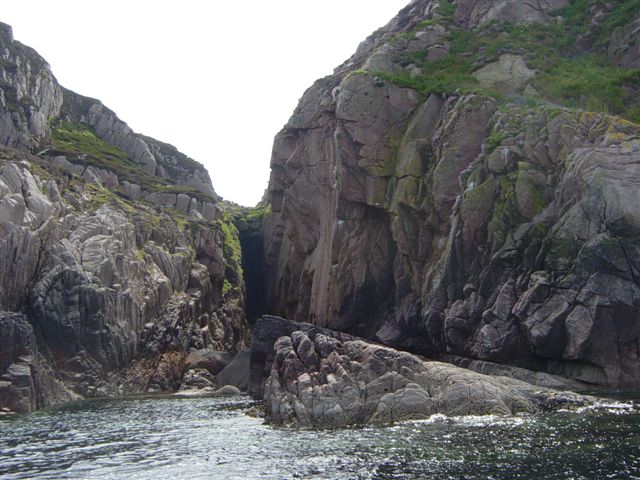 |
The Ross of Mull granite, a pink
granite of Caledonian age.
North shore of the Ross. |
| |
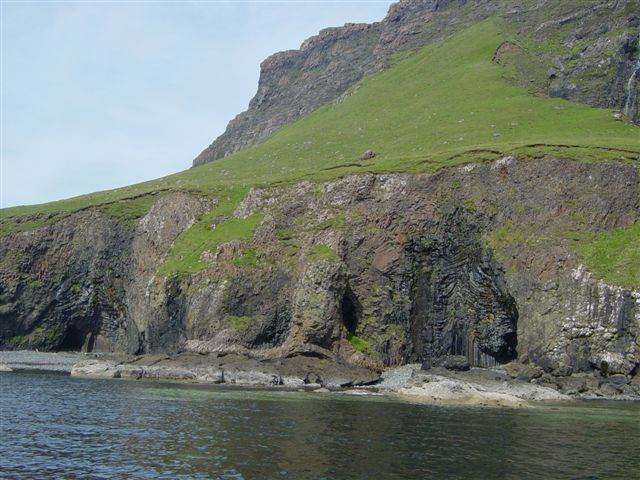 |
Tertiary lavas at Burg, at the west
end of the Ardmeanach peninsula, Mull. MacCulloch's Tree forms a
vertical hollow - right of centre. |
| |
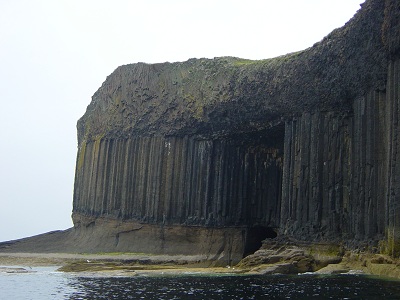 |
Fingal's Cave on the island of
Staffa. Superb polygonal cooling joints at the bottom of the
flow with a rubbly layer on top. The lava flow lies on a
softer layer of volcanic ash, which the sea is cutting back. |
| |
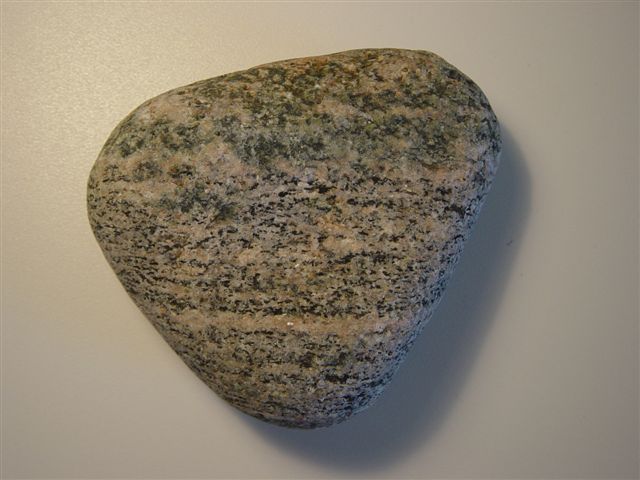 |
Lewisian gneiss
(ex pebble, Iona shore)
Banded dark-coloured mafic layers (biotite mica eroding out), and light-coloured felsic layers (quartz and feldspar) |
| |
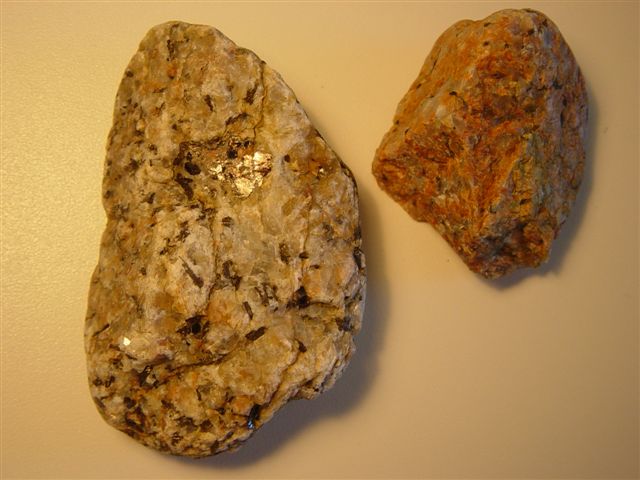 |
Ross of Mull granite.
Coarse grained felsic rock, typically pink.
Minerals: quartz, feldspar, biotite mica. |
| |
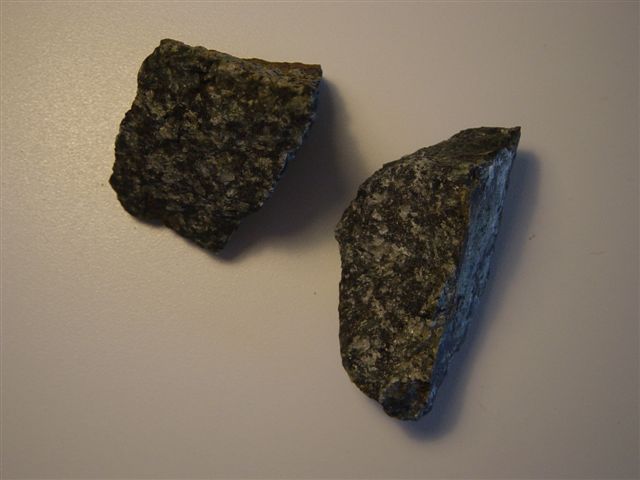 |
Gabbro ex palaeogene igneous
complex.
Coarse grained mafic rock.
Minerals: pyroxene, Ca-rich plagioclase, a little olivine.
|
| |
TOP |
NEXT FIELD TRIP > |
|